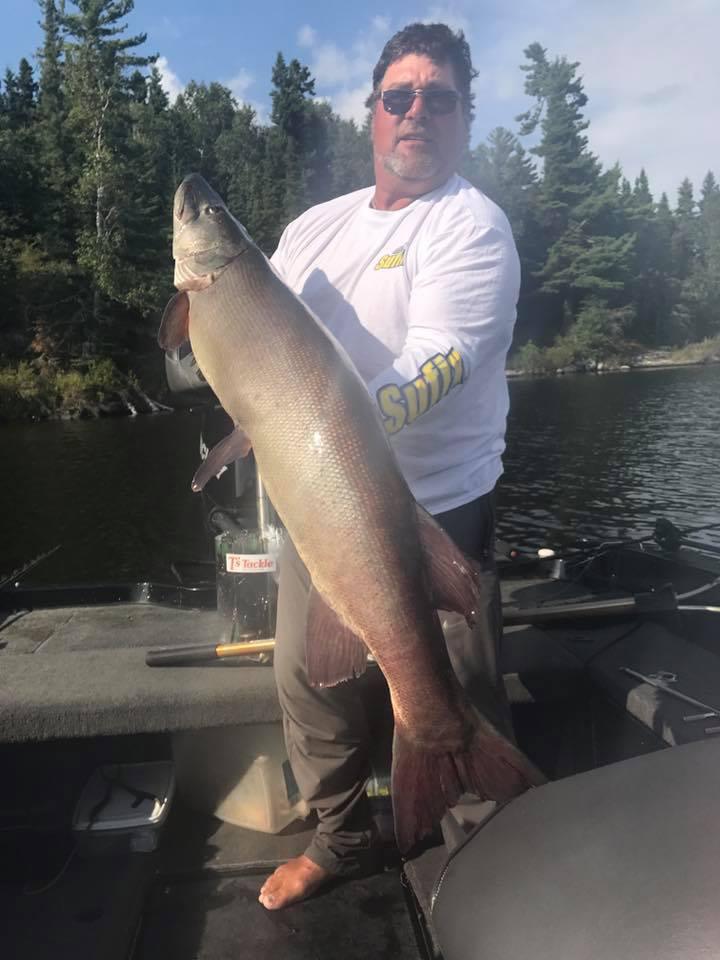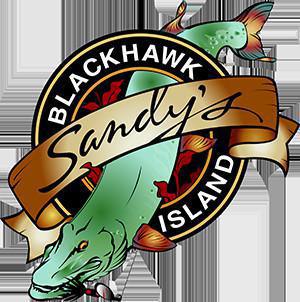Lake of the Woods is arguably the best musky fishing water in North America and Bill Sandy is arguably the best musky guide on the lake. Bill literally grew up on the shore of the big water and has been fishing its muskies for 49 years. He estimates that more than 12,000 muskieshave visited his boat during that time, with between 400 and 500 measuring at least 50 inches. Bill views the lake through the eyes of a resort owner as well as a musky guide. He has owned Sandy’s Blackhawk Island Camp since 1999 and his parents, Les and Dolores, ran Monument Bay Lodge from 1970 to 1995.
MHM: You have seen some incredible changes in the way the lake is fished. Tell us about them.
BS: The biggest changes have been the people in general. The number of musky fishermen is so much greater. When I started fishing for muskies there were only a couple resort guests who fished muskies. Otherwise they were all walleye fishermen. If we put 80 people through the camp during the season it was a lot. People just didn’t travel as much back then. I rarely got out of Monument Bay to go fishing as a young lad because there was no pressure anywhere. I didn’t need to go anywhere else. So, I learned it great and then worked my way out from there.
MHM: What was musky fishing like when you started?
BS: Musky fishermen were not very knowledgeable. Throw a big bait in the weeds and there should be a big musky there. They really didn’t think about how we think about it now, like water temperature, depth, water color. Back then you just went to the first weedbed and started casting. They didn’t have the motors to get around back then.
A lot of the spots I fished, nobody else fished them. I fished the Big Narrows for 15 years and never saw another musky boat. Seeing 60 to 90 fish a day was nothing. It took me an hour and 20 minutes to get there with the little motor I had. When I got a 25-horse motor I felt like I was the king of the lake.
MHM: How has the environment of the lake changed?
BS: Back then 80 percent of the fishing was weed fishing. The arrival of rusty crayfish correlated with when the weeds began to disappear, and they probably had the biggest impact on the vegetation. I think their population peaked maybe eight or nine years ago, because there’s less of them now. The good thing is everything eats them. But the vegetation still isn’t coming back like it was. And the shiners are still around, but not in the massive schools like they used to be. I understand it’s because of the spiny water fleas [another in- vasive species] that came down through Rainy Lake. The shiners eat them but can’t swallow them. But last fall I had a gazillion shiners at my dock.
MHM: How have the changes in forage — from the many crayfish to the fewer shiners — impacted the muskies?
BS: I think the muskies may have gotten heavier overall. They seem to be stouter than they used to be. You don’t catch as many skinny ones.
MHM: Tell us how you started fishing for muskies.
BS: Before my folks bought the resort, I just started fishing. My cousin, Rick Kelly, and I would fish around the islands near where our resort is now. Rick was one hell of a fisherman. We’d catch everything — bass, walleyes, and then we caught a musky and we wanted nothing else after that.
My first musky was a 30-pounder that I caught on a No. 2 Mepps Aglia with a copper blade when we were bass fishing. I was using a Zebco reel! We got that sucker close to the boat and Rick jumped in the water and chased it with a paddle for 10 minutes. We were so proud of ourselves.
MHM: What did you use for musky tackle then?
BS: I had a Heddon Pal rod and an old Pflueger reel, with a gear ratio of 1:1. I’m really surprised we caught any fish back then with that knuckle-buster. The first reel after that was prob- ably the 5500 Abu Garcia. There weren’t many baits that we had. The old Pikie Minnow with a metal lip was a really good one, the old Marathon bucktail, Johnson Silver Minnow and the Dardevle. I don’t think we used much else.
MHM: What are your favorite lures today?
BS: My favorites are double tens. They’ve become a staple here. The muskies are getting a little accus- tomed to them, but they still work. Bucktails have always worked. And you have to have some type like a Crane Bait or a Big Game. Rubber has been really good of twitchbait, the last few years, and I’ve always loved a good topwater bite.
MHM: A lot of anglers think topwaters aren’t as effective on Lake of the Woods now as they were years ago. Would you agree and, if so, why?
BS: The topwater bite has definitely diminished, and I don’t know why that is. But it kind of cycles. It got quiet on topwaters in the 1990s but then it came back. I don’t know if it has to do with water temperature or early springs, but it definitely fluctuates.
MHM: Tell us about some of your better days on the water.
BS: The biggest fish was the 58-incher Irv Kallin caught trolling with me 20 or 25 years ago. That was a huge, huge fish, a high 50-pounder, easy. Easy. I really wish I’d have stuck a scale under it. It was a magical fish.
The single best day I had we caught 19 muskies with five over 52 inches. They were all big and there was only one fish caught under 40 inches that day. It was just a spectacular day. I was 17 or 18 and fishing with clients.
MHM: Have your clients changed over the years?
BS: Yes, they definitely expect more now. Musky fishermen have lost the mystique that muskies are the “fish of 10,000 casts,” but we’re better fishermen now overall with better equipment. We should be better and catch more. But a musky is still a musky and you can’t get them to bite unless they want to.
MHM: What is the future for Lake of the Woods?
BS: I see a good future for the lake as long as everyone stays conservation-minded. Be aware of what you’re doing out there. You can hurt fish if you’re not careful.




